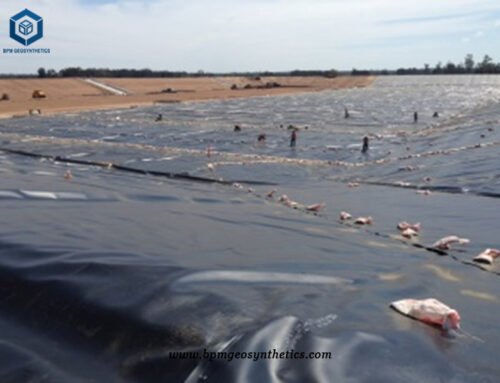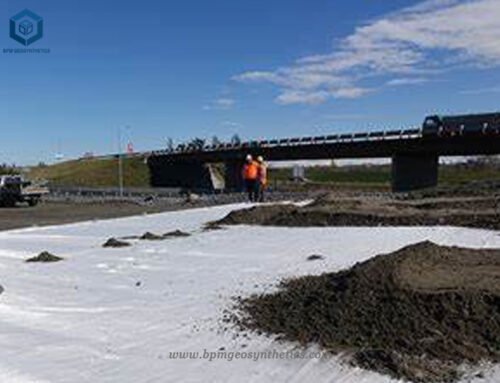Filament geotextile membrane Kenya is a high-quality geosynthetic material produced by spinning and needle consolidation of polyester filaments. It’s product specifications range from 100-800g/m². The polyester geotextile membrane exhibits excellent mechanical properties, corrosion resistance, UV resistance, and a diverse aperture range with zigzag pore distribution.
This polyester geotextile is applicablr for road subgrades, embankments, slope protection, channel isolation, seepage prevention, retaining wall, pavement reinforcement, and more.
In Kenya, the soils exhibit significant diversity including clay, sandy soil, and gravel. Filament geotextile membrane offers good adaptability for different soil types. They enhance soil stability and strength while reducing the risks of erosion and settlement.
Kenya’s climate is drought. Efficient water management is crucial. Filament geotextiles can serve as anti-permeability layers, preventing water from penetrating into foundations and road bases. This contributes to water conservation efforts and improves the long-term sustainability of roads.
The primary objectives of utilizing filament geotextiles in road construction in Kenya are to enhance roadbed stability. It also mitigate soil erosion and settlement, and improve the load-bearing capacity and durability of the roads. This enables the roads to cater to the diverse soil conditions and climate environments encountered in the region.
The construction contractor in Kenya contacted the BPM salesman through our website regarding a government highway project. They required technical indicators, samples, and third-party test reports for filament geotextile, with a focus on acid and alkali resistance.
Based on their project requirements, the BPM salesman recommended our 300g/m2 PP filament geotextile Kenya. After receiving the samples, the customer arranged for a third-party testing company to evaluate various indicators. They were highly satisfied with our products, as they fully met their requirements. Subsequently, we discussed quantity, price, delivery time, and payment method, and ultimately reached a cooperation agreement.
1 Why Choose Filament Geotextile Kenya?
- Good durability: Filament geotextiles exhibit excellent durability, enabling them to withstand prolonged underwater immersion and oxidation corrosion. They are suitable for long-term use in harsh environments, making them ideal for tailings treatment.
- Excellent permeability resistance: Filament geotextiles possess impressive permeability resistance, effectively resisting osmotic pressure and erosion damage from tailings. This reduces the risk of leakage.
- High tensile strength: Filament geotextiles have a high tensile strength, enabling them to withstand significant loads. This makes them suitable for the reinforcement and protection of tailings dams.
- Convenient construction. Filament geotextiles is ideal for specific tailings dam requirements, ensuring convenient construction, quick installation, and improved work efficiency.
In summary, filament geotextile has a range of excellent properties, making it well-suited for tailings treatment. It provides effective solutions for customers dealing with tailings in South Africa.
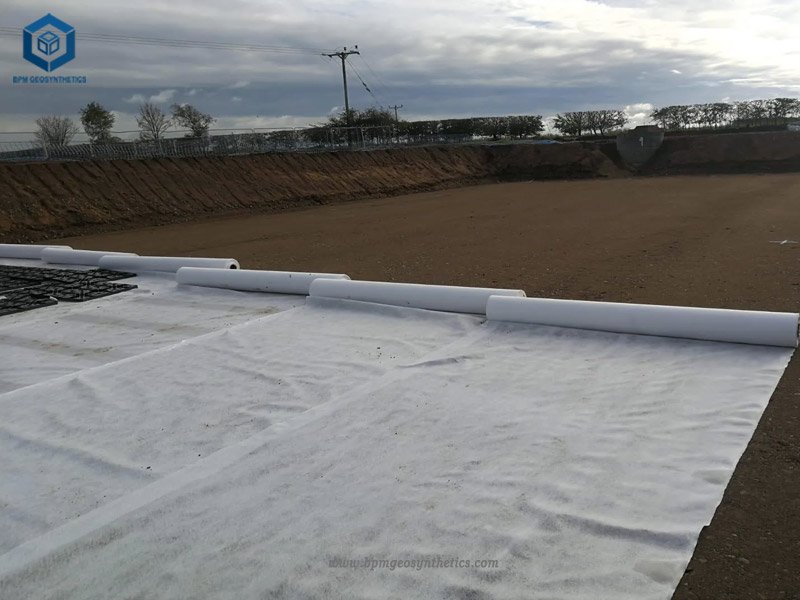
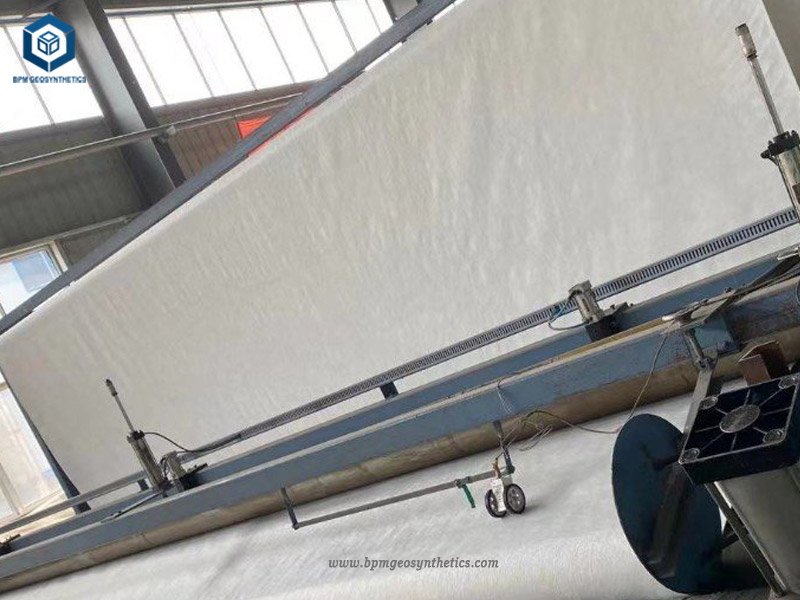
Filament non-woven geotextile Kenya exhibits excellent heat and light resistance. Even short-term exposure to nearly 20°C environment does not significantly affect its performance. Tests and practical applications have demonstrated that polyester geotextile possesses long-term resistance to corrosion from natural soil, water, and microbes.
2 What Are The Main Characteristics of Filament Non Woven Geotextile Kenya?
- It provides permanent isolation. It effectively isolates soil layers with different components and properties, preventing mixing and meeting construction requirements for frost resistance and load.
- It offers good filtration and anti-corrosion performance: It allows water to penetrate in all directions without building up pressure. Additionally, it prevents soil loss, promoting stability and corrosion resistance.
- It ensures reliable drainage performance: Its fluffy structure enables effective control of geotechnical engineering surface drainage.
- It provides good protection: Its puncture resistance, extensibility, and fluffiness effectively safeguard the waterproof layer from potential mechanical damage.
- It offers reinforcement: The fluffy structure and high strength enhance overall project stability and increase its strength.
- Its UV resistance effect meets the customer’s requirements. According to the international 500-hour testing standard, it can reach 50%-70%, and the higher the weight per gram, the higher the retention rate.
3 How To Lay Filament Geotextile Membrane
3.1 Storage, Transportation, and Treatment of Geotextiles
- Protect geotextile rolls from damage before installation.
- Stack geotextile rolls in a flat area without water accumulation, with a maximum pile height of four rolls. Ensure the identification piece of the roll is visible.
- Cover geotextile rolls with an opaque material to prevent UV aging.
- Maintain the integrity of labels and data during storage.
- Protect geotextile Kenya from damage during transportation, including on-site transportation from the storage site to the work site.
- Repair physically damaged geotextile rolls; do not use severely worn geotextiles.
- Do not use geotextiles that have come into contact with leaked chemical agents.
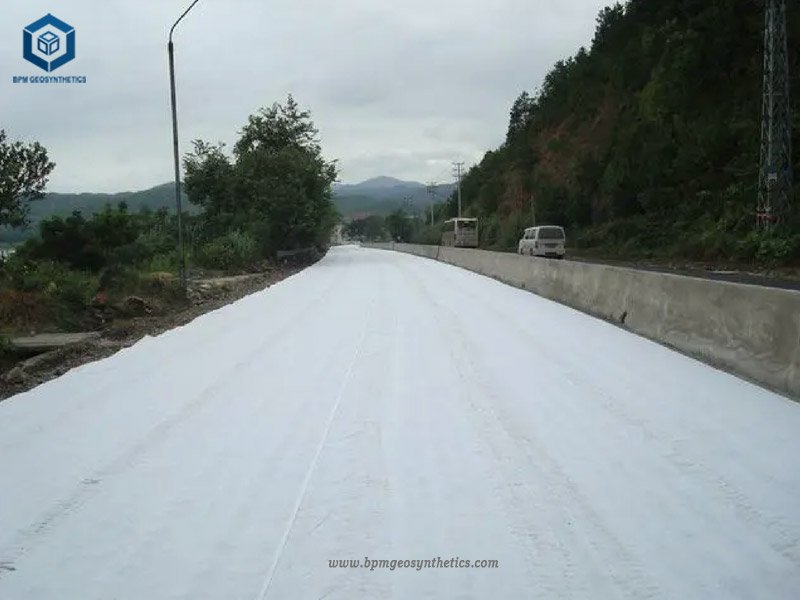
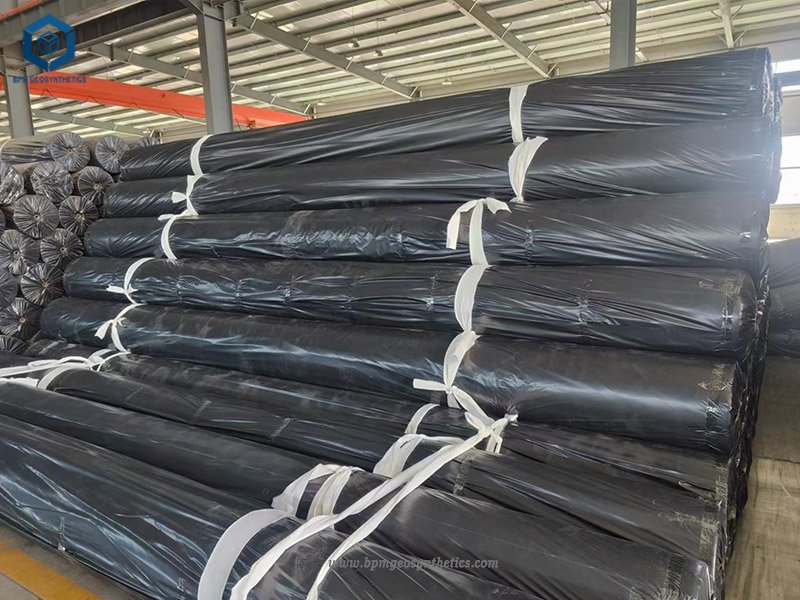
3.2 Filament Geotextile membrane Laying Method
3.2.1 Manual Rolling
- Ensure a smooth cloth surface and leave a margin for deformation.
3.2.2 Filament Installation
- Use methods like bonding, stitching, or welding.
- Stitching and welding width should generally exceed 0.1m, and lap width should generally exceed 0.2m.
- Welding or stitching geotextiles may expose for a long time.
3.2.3 Stitching of Geotextile
- Stitch continuously, avoiding spot stitching.
- Overlap geotextiles by at least 150mm before stitching.
- Maintain a minimum stitch distance of at least 25mm from the woven edge (exposed edge of the material).
- The stitched geotextile joint should consist of a chain stitch with a single line and a lock.
- Use resin material thread with a minimum tension of 60N for stitching. It will ensure chemical corrosion resistance and UV resistance equal to or exceeding that of geotextiles.
- Re-stitch any “missing stitches” in the affected area.
- Take appropriate measures to prevent soil, particulate matter, or foreign substances from entering the geotextile layer after installation.
Choose natural lapping, sewing, or welding for cloth overlapping based on terrain and intended use.
4 Specifications of Filament Geotextile Membrane for Road Project in Kenya
- PP Filament Geotextile 300gsm
- Total Quantity –100,000 Square meters
- Each roll Size – 6m*100m
- Standard – ASTM standard
BPM specializes in manufacturing geosynthetics products to worldwide customers since its foundation in 2007. If you have any questions or inquiries, please fill and submit the following form, we will reply as soon as possible.


